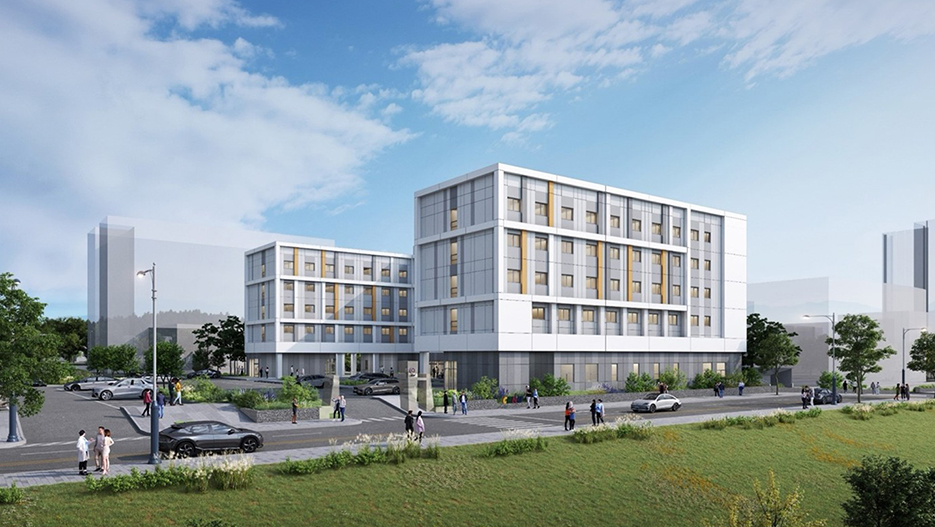At CBNU Osong Campus, located about an hour away by bus from the Gaesin Campus, there are the College of Pharmacy Buildings 1 and 2, and the College of Medicine Building 3. Among them, the College of Pharmacy Buildings 1 and 2 accommodate approximately 230 undergraduate students from the second to sixth year, and when including graduate students, about 443 students are currently engaged in their studies.
However, as the Osong Campus does not yet have a student dormitory, students either live independently near the campus or use dormitories located at the distant Gaesin Campus. Lee Haram (College of Pharmacy, 23) said, “Since there is no dormitory on the Osong Campus, I have no choice but to live alone. There is only one officetel (a portmateau of “office” and “hotel”) close to the school, so I have to pay relatively high monthly rent,” expressing inconvenience.
To alleviate such difficulties faced by Osong Campus students, construction of the Osong Student Dormitory began on Aug. 18. According to Shin Byung-jae, an administrative officer from the Department of Facility Management, the dormitory is under construction with a target completion date of Feb. 2027. The building will consist of one basement level and five stories above ground, with a total floor area of approximately 7,364 square meters. The basement will contain facilities such as a mechanical room, electrical room, and generator room, while the first floor will include administrative offices and various amenities. Floors two through five will house student rooms. Amenities planned for the first floor include a convenience store, fitness center, study room, reading room, lounge, laundry room, and parcel storage room. Due to the number of residents and budget limitations, a student cafeteria will not be included.
The dormitory will have a total of 232 rooms accommodating 406 residents, consisting of four types: single rooms (56 rooms), double rooms (170 rooms), married-student units (2 rooms), and rooms for students with disabilities (4 rooms). Single and double rooms will be located on each floor, while married-student and accessible rooms will be placed on the second floor. Each unit will have its own private bathroom. The sizes, including bathrooms, will be approximately 16 square meters for single rooms, 19.1 square meters for double rooms, 48.2 square meters for married-student units (for three people), and 19.8 square meters for rooms for students with disabilities. Residents may begin moving in during the first semester of March 2027.
Lee also said, “It will be good to have a dormitory because it will reduce financial burdens. Since dormitories are managed by the university, they will also feel safer, and I will be able to live more comfortably without encountering outsiders. However, if there is no student cafeteria, it will be expensive to eat out for every meal. It would be nice if there were at least a small kitchen or a simple cooking space,” voicing both anticipation and concern. In response, Shin suggested, “Using the staff cafeterias of nearby public institutions or local restaurants.”
The Osong Student Dormitory, once completed, is expected to contribute to the stability and welfare of student life. However, since a limitation, the absence of a student cafeteria—has already been identified, it is hoped that the university will make additional efforts and careful preparations to supplement this aspect.

By Ko Ga-ryoung
ifsuc33@chungbuk.ac.kr


 All
All Campus News
Campus News






 Ko Ga-ryoung
Ko Ga-ryoung











